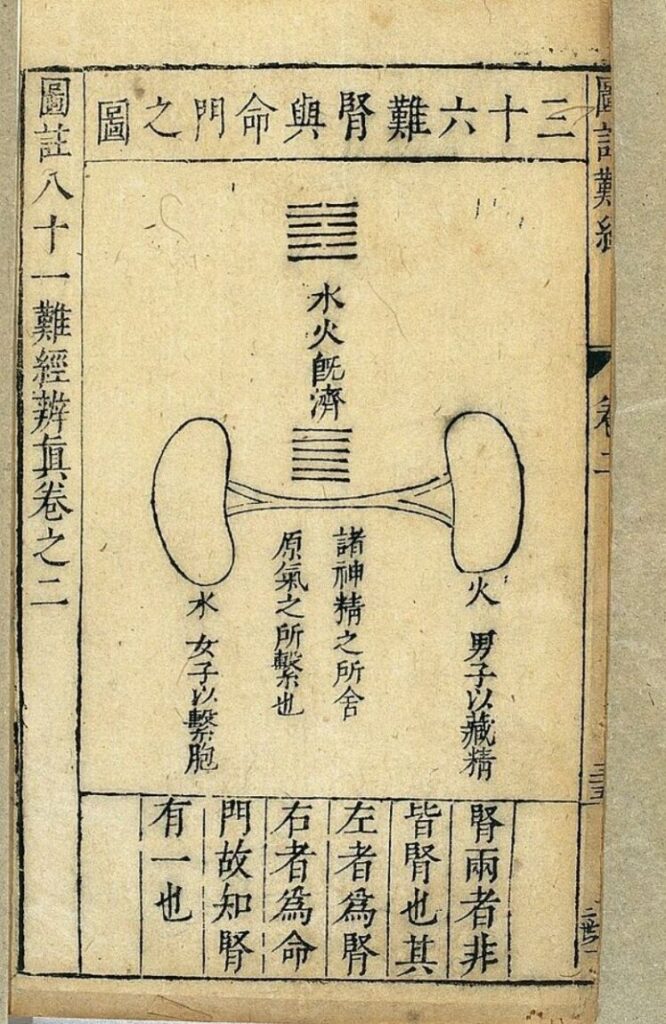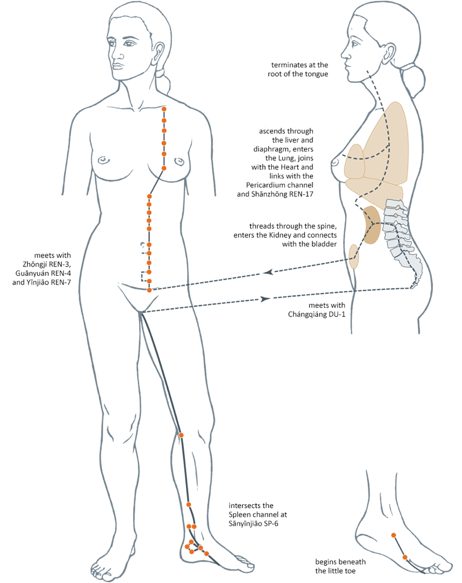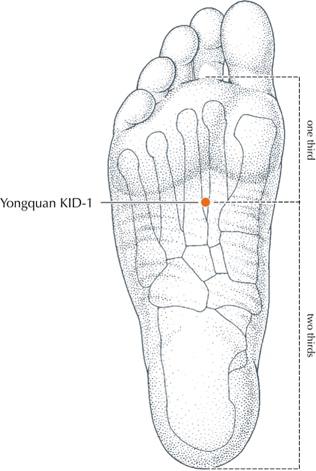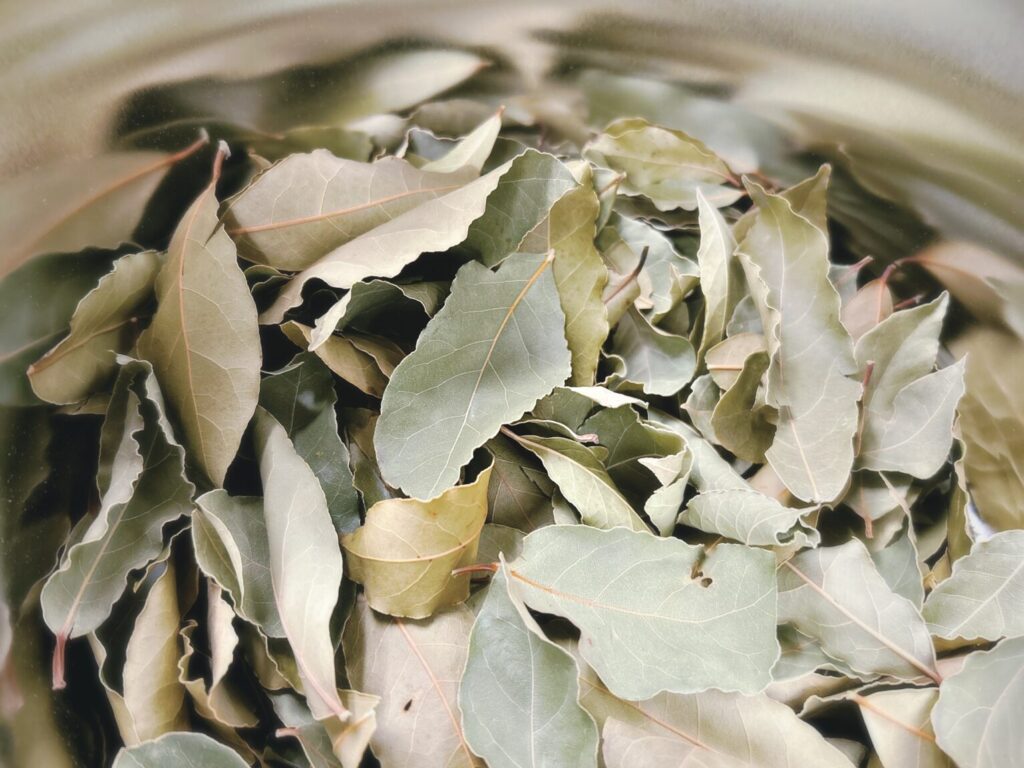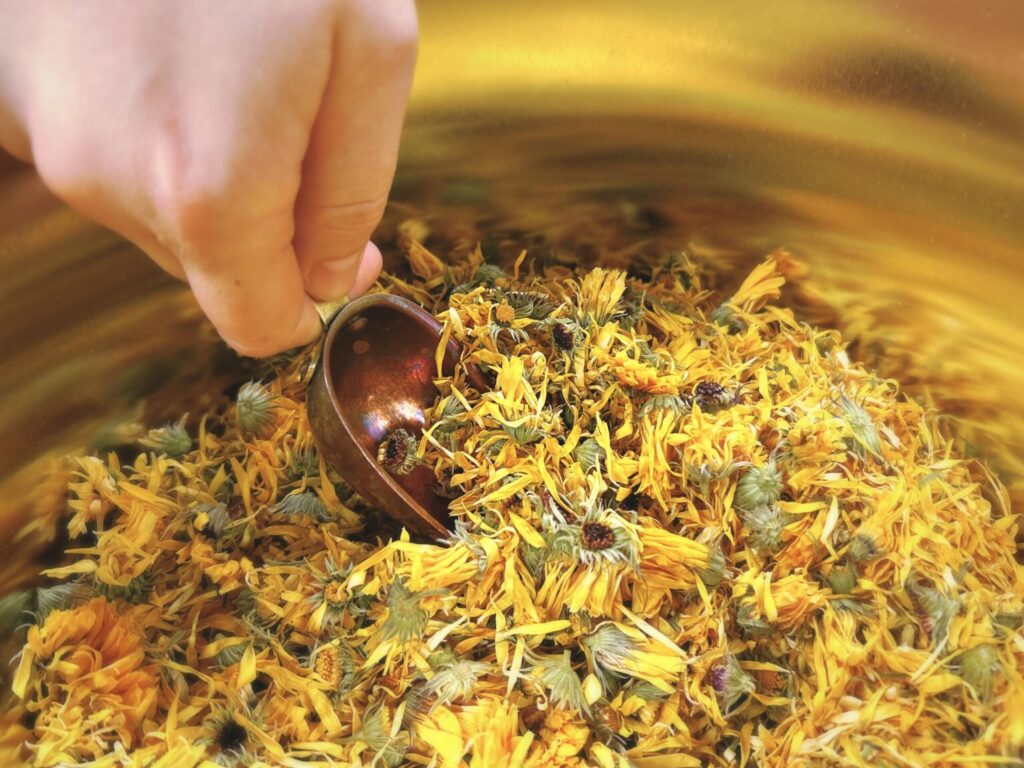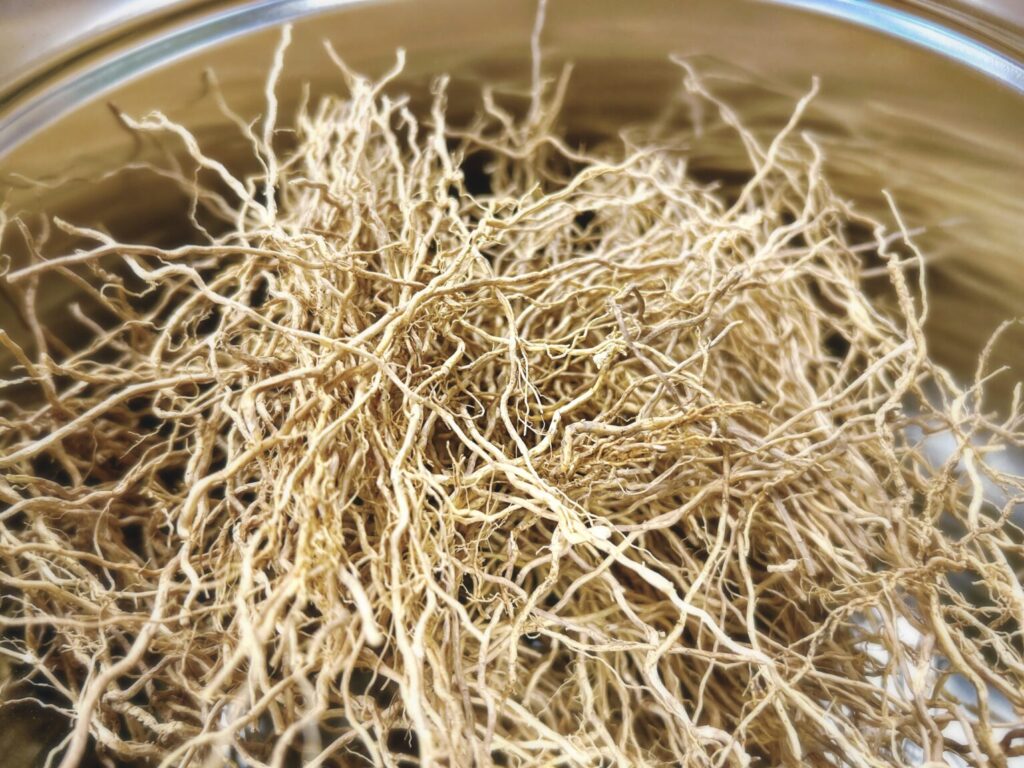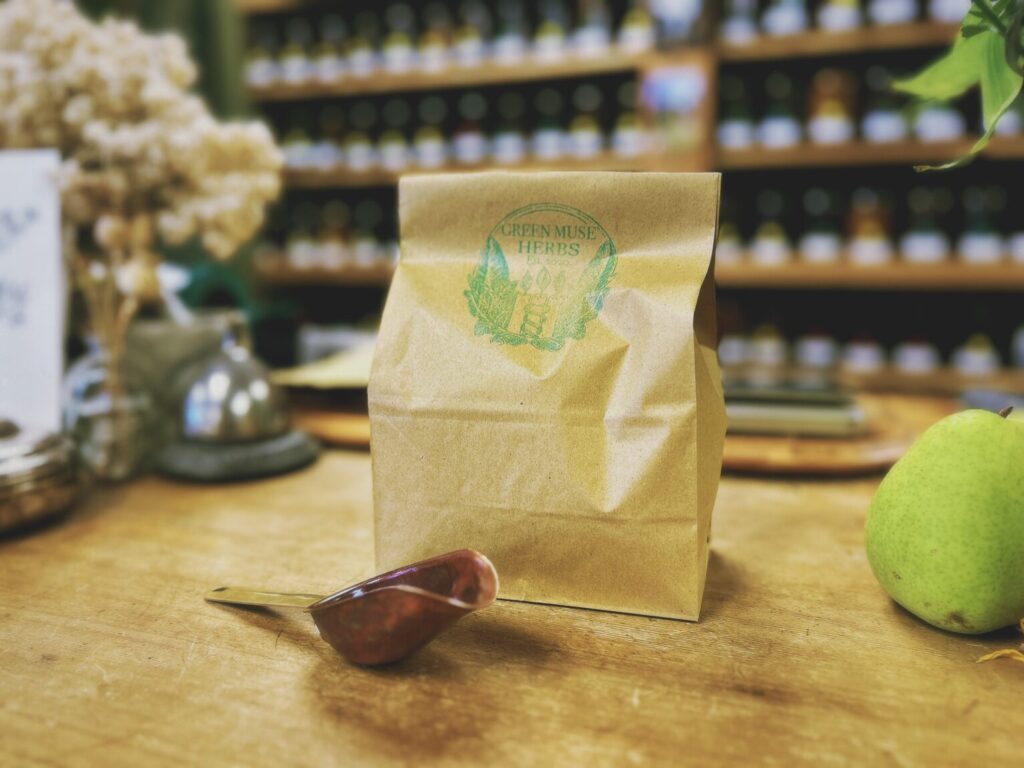Gathering Warmth: A Foot Soak for the Kidney Channel, a Collaboration between Bre Johnson, Dip. of Acupuncture & Green Muse Herbs
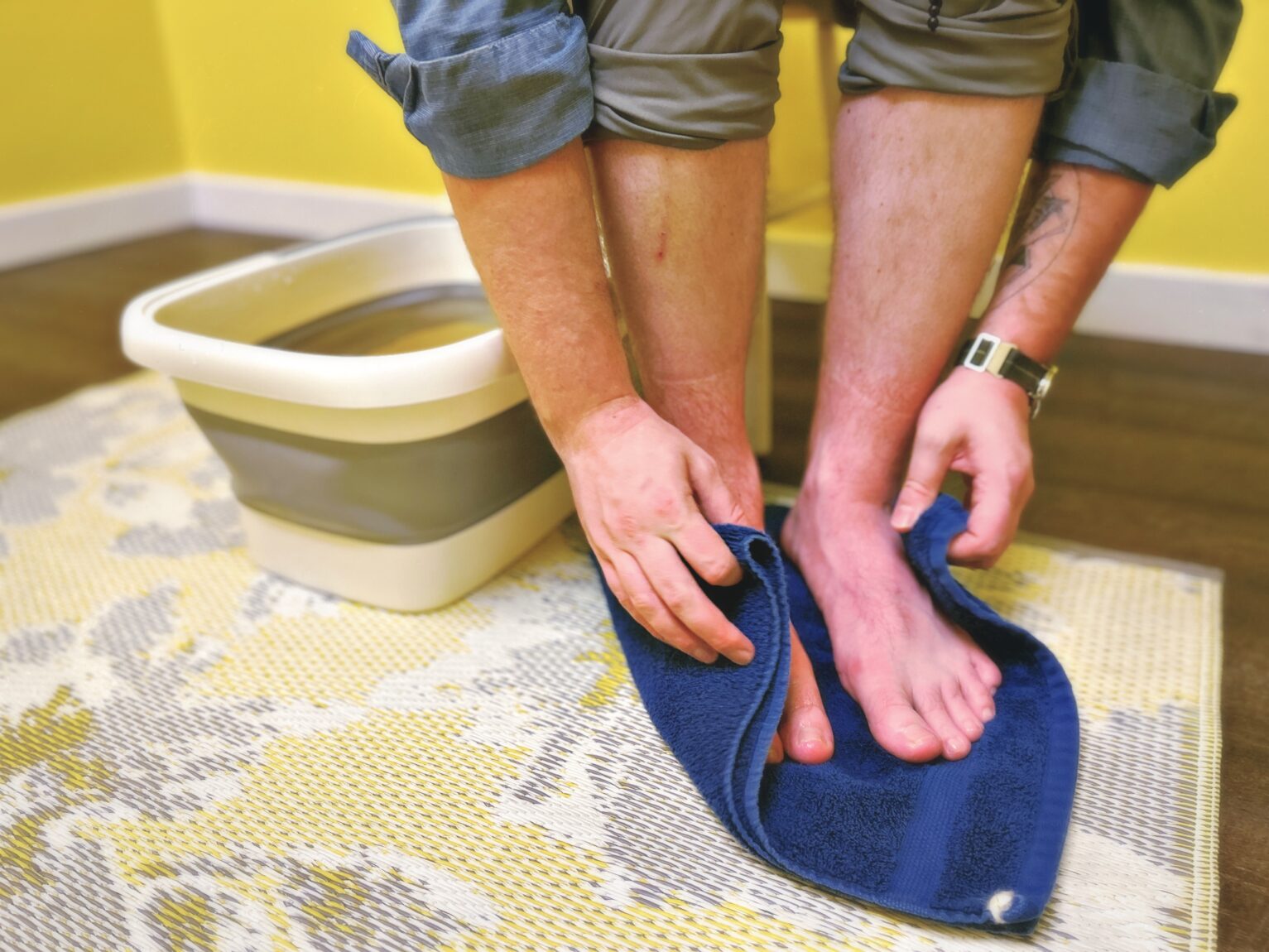
In Chinese medicine, each season carries its own rhythm and medicine, gently guiding how we live and care for ourselves.
While the Western calendar marks the beginning of winter at the solstice (December 22nd), the Chinese solar calendar recognizes November 7th as the first descent into winter. In this view, the solstice represents the heart of winter, rather than its beginning.
We can also look to the Wuyun Liuqi, the ancient Chinese system known as The Five Movements and Six Visiting Qi, which helps us understand how the year’s changing climates influence our health. This system describes the subtle patterns of temperature change that move through each year, offering guidance on how to live in harmony with the seasons.
This Season’s Forecast: Autumn to Early Winter:
- September 23 – November 22: alternating periods of dampness and dryness
- November 22 – January 20: an unusually warm winter
Since the same cycles that move through the sky also move through us, it is important to remember that climate and mood, weather and body, are intimately connected.
Navigating the Seasonal Shifts
Late September – Late November: Alternating Dampness and Dryness
The body may feel heavy and sluggish one day and parched the next.
Simple adjustments can help smooth these fluctuations:
- Stay warm and dry after being outdoors.
- Avoid cold or raw foods when the damp sets in.
- Sip warm water or tea to keep fluids moving when the air turns dry.
Research shows that cold drinks can temporarily slow digestion by delaying gastric emptying, while warm beverages help maintain healthy circulation and digestive flow.
Supportive foods:
- Focus on simple, lightly seasoned meals that support healthy fluid movement.
- Include foods that transform dampness such as barley, adzuki beans, mushrooms, and cooked greens.
- When dryness predominates, add moistening foods like pear, sesame and honey
- Avoid overly spiced or greasy foods, which can trap dampness and deplete fluids.
Late November – Mid-January: Warmth in the Depth of Winter
It’s easy to feel pulled into doing more. Try to slow your pace and protect your reserves:
- Keep movement gentle and grounding, avoiding excessive sweating.
- Eat warm, cooked meals such as soups, stews, or congee.
- Go to bed a little earlier and rest when you can.
- Take time for quiet moments of reflection or stillness.
Supportive foods:
- Eat grounding foods such as beets, dark leafy greens, and small amounts of organ meat to replenish yin and blood.
- Choose slow-cooked, warming meals to nourish the Kidneys and preserve energy.
Even when the air feels mild, this is still a time to gather energy, not spend it.
The Kidneys and the Season of Stillness
Winter belongs to the Kidneys, the Yin organ of the water element. They are the deep root of life, holding our inherited essence, or Jing. This essence is like a seed resting in the dark soil, deep, vital, and quietly storing the potential for life. When nourished by warmth, it transforms inwardly, sustaining growth and renewal from within.
Between the two Kidneys, at the center of this system lies the Mingmen, the Gate of Life, the subtle flame that warms the body and animates the spirit. When the Gate of Life is steady, our waters flow smoothly, and the inner fire nourishes.
The Kidneys and Heart form a living dialogue between fire and water. When this communication is open, Heart fire descends to warm the Kidneys, and Kidney water rises to cool and anchor the Heart. In this balance, spirit and essence nourish one another, bringing steadiness and ease. When the exchange is strained, we may feel overheated, ungrounded, or find our vitality low. Simple things like rest, warmth, quiet moments, and deep sleep, help to restore the natural rhythm between warmth and stillness.
Fear and shock are emotions linked with the Kidneys. Fear draws Qi downward, while fright scatters it. These are protective responses. When fear becomes prolonged, Qi can stagnate or freeze, and the body begins borrowing from its deeper reserves to stay alert. We may feel contracted, braced against life, and may struggle to trust and access stillness.
The virtue of the Kidneys is the capacity to remain rooted in uncertainty, to let the frozen parts thaw slowly in warmth and safety, transforming fear into wisdom. Rest itself becomes an act of restoration.
| YIN ORGAN | Kidney |
| YANG ORGAN | Urinary Bladder |
| DIRECTION | North |
| CLIMATE | Cold |
| TISSUE | Bones |
| MANIFESTATION | Head Hair |
| SENSE ORGAN | Ears |
| COLOUR | Dark Blue/Black |
| SPIRIT | Willpower/Zhi |
Warming the Kidney Channel
As winter deepens, tending to warmth begins from the ground up. The feet are our first point of contact with the earth and the place where the Kidney channel begins. Beginning beneath the little toe, it crosses the sole of the foot and emerges at Yongquan (KID-1), the “Gushing Spring.” From there, it travels up the inner legs and low back, connecting deeply with the Kidneys, Bladder, Liver, Lung, and Heart.
Warming the feet activates this pathway, encouraging circulation through the lower body and supporting the smooth descent of Qi. A warm herbal foot soak offers a simple way to do this. As the heat rises along the channel, it eases stiffness, dispels cold, grounds scattered energy, and calms the mind.
Herbal allies like mugwort, rosemary, sage, or yarrow strengthen these actions by invigorating circulation and relieving damp-cold stagnation.
In Chinese medicine, there is a well-known saying:
不通則痛, 痛則不通
(Bù tōng zé tòng, tòng zé bù tōng)
“If there is free flow, there is no pain; if there is pain, there is lack of free flow.”
The ritual of a foot soak embodies this principle. Through warmth, rest, and gentle attention, we invite Qi to move freely again. Immersing the feet, softening the breath, and allowing warmth to rise inward supports the Heart–Kidney connection and restores the rhythm between rest and renewal.
As the weeks ahead bring lingering warmth to the season of stillness, it’s important to resist the impulse to overextend. The Wuyun Liuqi forecast reminds us that when nature offers warmth out of season, our task is to store rather than scatter it. Grounding through the feet and cultivating quiet presence help harmonize us with what’s moving within and around us. It’s a way of gathering warmth inward and living in rhythm with winter’s depth.
HERBAL FOOT SOAK INSTRUCTIONS
Precautions:
- If you have neuropathy or reduced sensation in your legs/feet, you will need to use a thermometer to avoid burns.
- Foot soaks are not recommended in cases of blood clots, epilepsy or metastatic cancers as they can be stimulating and increase systemic circulation.
- If you are pregnant, do not use herbs in your foot soaks.
- It is also important that you consult your health practitioner before beginning a new health regimen, including herbal foot soaks.
Supplies:
- Basin large enough for both feet
- Warm water
- Towel
- Herbal foot soak blend (available at Green Muse Herbs)
- A disposable tea bag or cheese cloth to contain the herbs in the basin
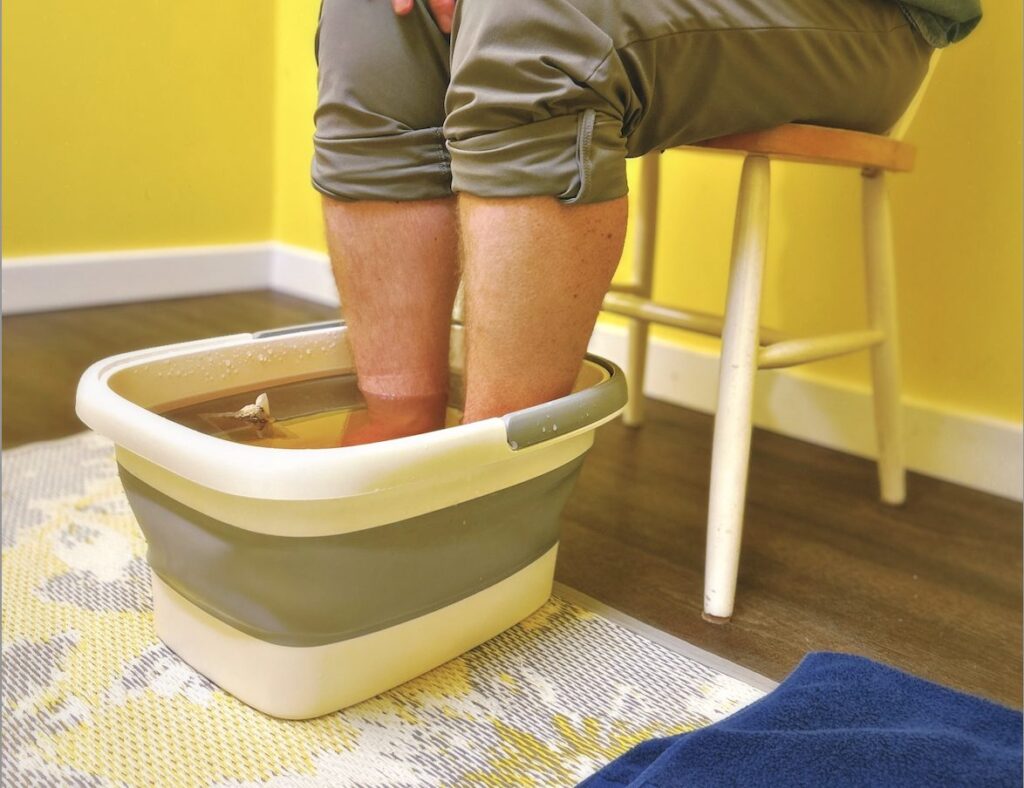
Preparing your space:
When possible, it is important to avoid devices and TV time while using a foot soak to let the Qi circulate thoroughly away from the head. When we use devices, it encourages frenetic mental activity which can interfere with this process. Calming music can be supportive.
Choosing an Herbal Blend:
Anna of Green Muse Herbs has put together a list of a few of her favourite herbs for foot soaks.
These herbs are just a starting place! If there’s more specific support you’re seeking or you have any questions, stop by the apothecary and they can help you make a custom blend.
Heart & Hands clients receive a 10% discount off purchases at the Green Muse apothecary when referred by one of our practitioners!
A gentle reminder: herbs are powerful! Start with small amounts, especially if they are the root or bark or seeds of a plant.
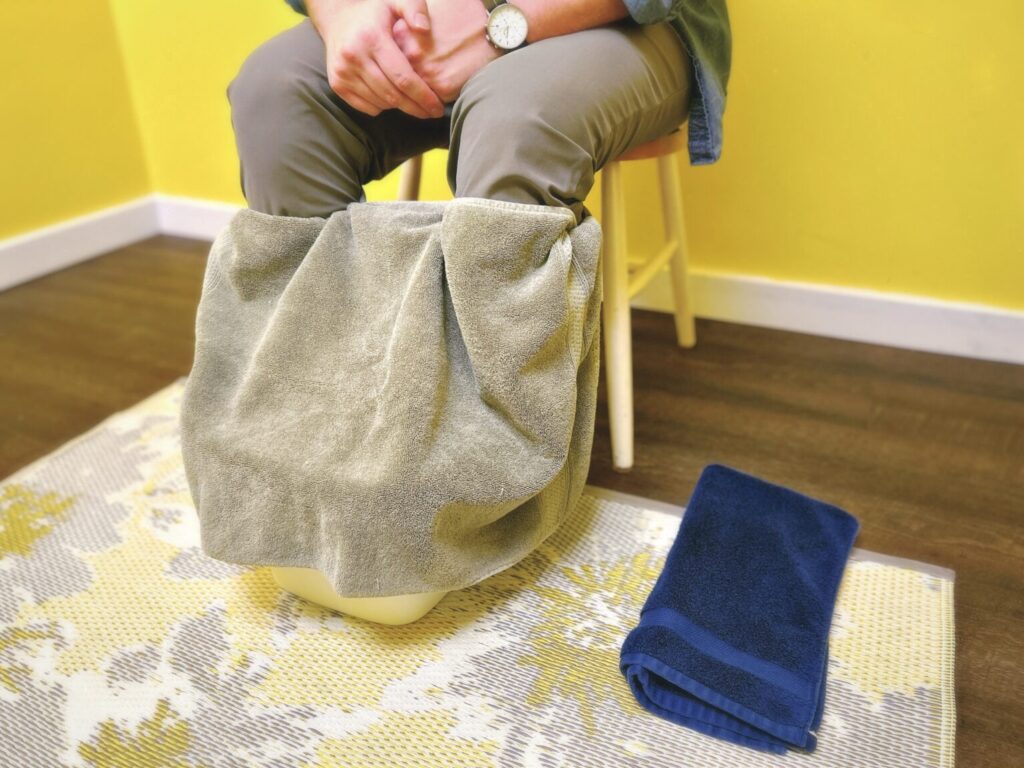
Foot Soak Instructions:
- In the evening, fill a basin with hot water, enough to reach the calves –
ideally around 38–42°C (100.4–107.6°F). You want the water to be hot but not scalding. If you have reduced sensation in your legs or feet, please consult a physician first and use a thermometer to gauge temperature. - Add your Teabag of herbs to the hot water (ex: Mugwort, Sage, or Peppermint, etc.) depending on your goal. Let it steep while you wait for it to become a comfortable temperature.
- When the water has reached a comfortable temperature begin the foot soak. Cover your legs and the gap of the basin with a towel to prevent drafts, this will help to keep the water warm and help to circulate the heat.
- Spend the first minute of the foot soak taking a few slow, deep and restorative breaths, noticing any bracing, breathing into these regions, and relaxing the body and mind if you are able.
- Soak for 15–30 minutes depending on your comfort level. You can focus on an intention or simply take the time to sit and rest.
- If you are adding more hot water, remove your feet from the basin and dry them thoroughly before moving. This reduces the risk of burns and injury due to a fall.
- When you are finished, be sure to dry your feet thoroughly with a towel and keep them warm afterwards — put on cozy socks or rest under a blanket away from drafts and enjoy a non-stimulating warm beverage (water or tea)
- Dispose of the basin contents, remove and compost the tea bag.
- Repeat as needed throughout the week.

